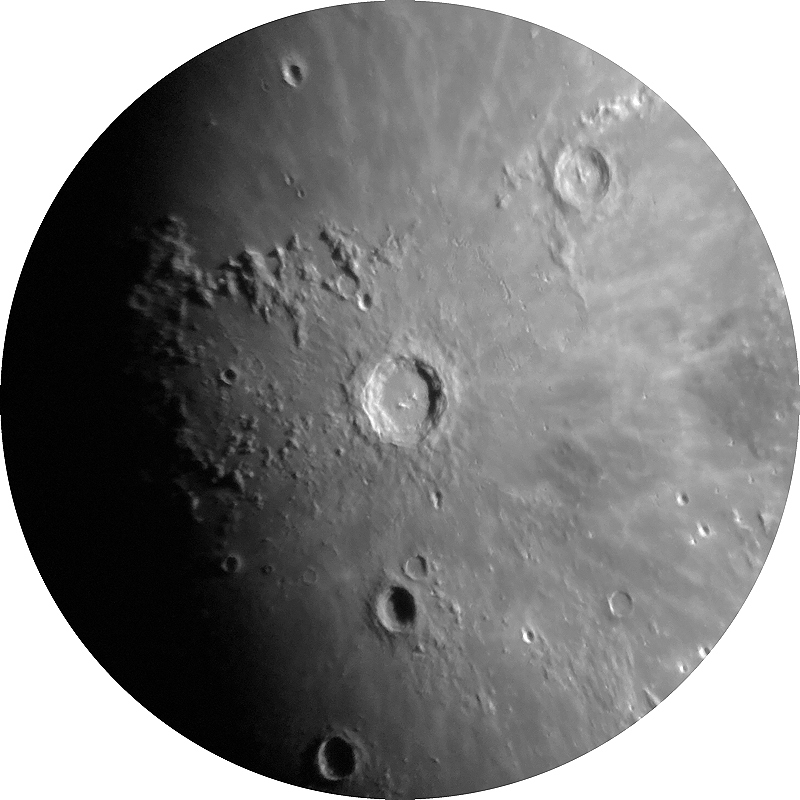iPhone Lunar Craters Copernicus & Clavius
Posted: 27 September 2020
|
Open: Saturday, 26 September 2020, 1755 MST Temperature: 85°F |
Session: 1523 Conditions: Clear, breezy |
Equipment:
12" f/8 LX600 w/StarLock
2" 24mm UWA eyepiece
2" 30mm eyepiece
2" 5.5mm 100° eyepiece
Camera:
iPhone 11 Pro Max
1800 MST: LX600 ON, StarLock OFF, High Precision OFF.
Viewed the waxing gibbous Moon, 102X and 81X.
Relaxed on the observatory patio bench for a few minutes.
1816 MST: sunset.
1818 MST: slewed to the planet Mercury. It was not yet visible very low in the bright twilight western sky.
1828 MST: relaxed some more on the bench for a few more minutes. The breezes had calmed down.
1836 MST: viewed Mercury, 81X and 443X.
Slewed back to the Moon. Mounted the iPhone 11 Pro Max on the 2" 30mm eyepiece using the Levenhuk adapter. Took this afocal 81X image of the Moon using the iOS app NightCap Camera (ISO 32, 1/400sec, 1X lens).

Did some lunar observing, 443X. The craters Copernicus and Clavius were nice sights.
Mounted the iPhone on the 2" 5.5mm eyepiece using the Levenhuk adapter. Took these images using NightCap Camera.
Crater Copernicus (ISO 100, 1/120sec, 1X lens)

Crater Clavius (ISO 400, 1/120sec, 1X lens)

Removed the iPhone and adapter. Viewed Saturn and four moons, 443X. Then viewed Jupiter and four moons, 443X and 102X.
1905 MST: LX600 OFF.
|
Close: Saturday, 26 September 2020, 1915 MST Temperature: 79°F |
Session Length: 1h 20m Conditions: Clear |
Comments are welcome using Email. Twitter users can use the button below to tweet this report to their followers. Thanks.
Cassiopeia Observatory Home Page
Copyright ©2020 Michael L. Weasner / mweasner@me.com
URL = http://www.weasner.com/co/Reports/2020/09/27/index.html
